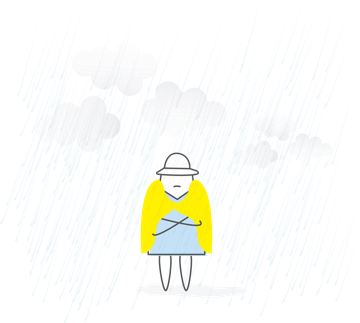Apply customer experience in sales
It is very important for each business for development to periodically conduct an analysis of its activities and correct errors. Today we’ll talk about Customer experience - simply customer experience. How to analyze it and on its basis to build long-term relationships with customers and increase sales? Advises Julia Pelikh-Yagoda, sales expert.
Experience the "sales funnel"
The customer’s experience in communicating with the company begins even before making a purchase, growing during the communication chain. Consider the stages of winning a customer and gaining Customer experience:
First contact. When a person first contacts your company (visited a website or a store), he is called a visitor. At this stage, his attitude towards you is influenced primarily by factors such as the layout / convenience of the storefront, the range of products, prices, stock availability. For example, a potential customer clicked on a link with your ad and got to your site. But there was no sale of goods that attracted his attention.
Many visitors are annoyed and want to leave if they immediately receive an online chat form or an invitation to subscribe to your shares, an offer to send notifications and other impositions.
Convenient search and the ability to select products for different characteristics on the site, good photos and videos - these are must have online sales in our time. And the trend of using voice search of goods has already reached us, which not only young people will appreciate.
Of course, a modern site must be optimized for mobile devices and load quickly. Otherwise, up to 50% of buyers will immediately leave it.
Second contact. When a person has shown interest and made an order or made contact with the manager, we call him a potential buyer. In online chats, people consultants respond very slowly and very unprofessionally, this problem is known. Therefore, chat bots are spreading fast, working 24 hours a day, seven days a week, and programmed to solve standard tasks and answer common questions from customers.
At this stage, 80% offline, the formation of the Customer experience of a potential buyer depends on the manager - will he be able to choose the right product for the client's needs, make a presentation and make a purchase. Not every online store has the option of online fitting, which is very convenient for customers. And the new trend, dictated by large foreign brands, offers to use augmented reality for viewing goods.
Whether the purchase will be made depends on the convenience of payment: the presence of a terminal in the store, a wide selection of payment systems on the site, clear banking authentication. When making purchases through mobile versions, the new generation is already expecting authentication through fingerprint, face, voice, and iris scanning.
Finally, in online sales, the impression of a purchase can be spoiled by problematic logistics: errors in order picking, long waiting for goods, difficulty in returning a purchase, lack of warranty cards, unpleasant, drunk couriers.
Third contact. After the person made the first purchase, he becomes a buyer. The person went through a full service cycle in your company. But if we want to turn him into a regular customer, we should always think: what impressions did he have? Did he remember you? Is he satisfied with the product, price and service? Whether the buyer returns again depends on the experience gained by him of the purchase and service from you.
Automation allows you to monitor customer experience. The program saves the purchase history, analyzes the choice and preferences of each individual buyer and helps to formulate an interesting offer. With the help of CRM, personalized mailings are made taking into account the needs of a particular client - and this is not mass spam, but a useful hint and customer focus for the buyer. Gartner predicts that by 2020, chatbots will manage approximately 85% of customer interactions. In small stores and boutiques that do not have automation, the seller can personally work on loyalty by sending out offers of new products that may be pleasant to Viber.
Fourth contact. “Only after the buyer returns to you more than 4 times, we can call him a regular customer,” the expert emphasizes. Of course, the more such customers, the more stable the business. Therefore, it is very important to increase the number of regular customers with a positive Customer experience.
Customer Life Cycle
No need to guess which of the sales stages is built incorrectly and where exactly we are losing the client. Julia Pelikh-Yagoda recommends that all entrepreneurs periodically calculate the number of customers at each stage of the funnel, look for bottlenecks and work on them. For example, 100 people visit your store every day, of which only 30 people are interested in the product and started a dialogue with the manager. And out of these 30, only 5 made purchases. In this case, the total conversion (percentage of those who completed the purchase) of sales was 5%. The main task of the head of the company is to improve each stage of the "sales funnel" and increase conversion.
When calculating repeat sales and regular customers, the expert advises taking into account such a factor as the “Customer Life Cycle”, because it is different in each product, and it depends on how often we need to consider the number of regular customers. The life cycle is built at such stages: need - purchase - use - repeated need - purchase. For example, when buying bread, the customer’s life cycle is 1 day (that is, the need is daily), for mobile phones - 1 year, and for refrigerators - 7 years. Therefore, in grocery stores we can count the number of regular customers even by month, but in household appliances - not earlier than a year later. Fortunately, in the sales of clothes, shoes and accessories, it’s not logic that works, but emotions, and you can always count on impulse purchases.
Key indicators Customer experience
When thinking about how to improve the experience of your customers, remember your experience. Ask yourself the following questions: “Are there any companies in which I am a regular customer or supporter?”, “How did these companies manage to build my loyalty?”, “Are there any companies that I left as a client? Why? ”,“ What is my company doing to build customer loyalty? ”,“ How are we different from our competitors? ”.
The list of factors of formation of customer loyalty to the store from a sales expert Julia Pelikh-Yagoda:
- A wide range of products, their availability, the possibility and convenience of choice.
- Prices, promotions, product quality.
- Qualified specialists who know the product well and know how to choose the right solution for the needs of the client.
- Ability to solve non-standard requests, the desire to help the client.
- Fulfillment of the arrangements.
- Service speed.
- Friendly, polite and sincere staff.
- Additional services and chips.
- Ability to resolve conflicts in favor of the client.
- A system of reminders and informing about promotions and updates.
Ways to learn customer experience
To develop a loyalty strategy, the expert connects the following analysis tools:
- Monitor competitors, evaluate the level of service and see what chips they use to work with customers.
- To monitor the foreign market is to draw interesting ideas from neighbors in Europe.
- Assess the level of service in your company, identify gaps in service with the help of a mystery shopper.
- Conduct a customer survey.
According to the expert, a customer survey is the most reliable way to get feedback. Since clients cannot always allocate time for polls and show a desire to be interviewed, one will have to be smart.
It is possible to organize a customer survey in the following ways, suggests Julia Pelikh-Yagoda:
- Survey-voting directly in the store: emoticons, colorful balls, corresponding to the assessment of the service. The disadvantage of this method is that the client is not always sincere, since it is inconvenient for him to put a sad smiley directly in front of the employee. Secondly, employees or their friends can artificially wind up the results.
- Survey of customers at the exit from the store, when the employee offers to pass a survey of customers who left the store. There should be no more than 5 questions so as not to bother customers. The downside is that people can not always tell the truth, afraid to offend you.
- Survey customers by phone after making a purchase. Its minus is that you can call at an inconvenient time and annoy customers with this.
- Newsletter via SMS or Viber with a proposal to take the survey. It is advisable to motivate customers with some additional bonus or gift for the left review.
After identifying the strengths and weaknesses in the service, it is necessary to develop an appropriate action plan to improve what customers do not like - and be sure to get satisfied customers with a positive Customer experience.















